This diagram shows two circuits that could be used to act as a dimmer switch for a lamp.
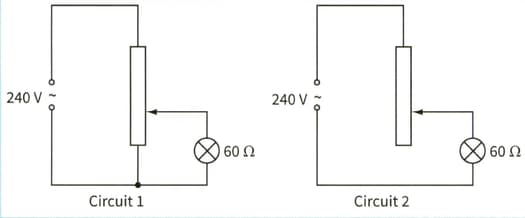
(a) Explain one advantage circuit 1 has over circuit .


Important Questions on Practical Circuits
This diagram shows two circuits that could be used to act as a dimmer switch for a lamp.
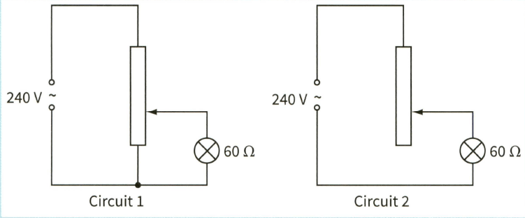
(b) (i) The lamp is rated at at . Calculate the resistance of the lamp filament at its normal operating temperature.
This diagram shows two circuits that could be used to act as a dimmer switch for a lamp.
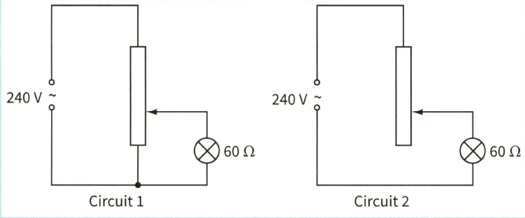
State and explain how the resistance of the filament at room temperature would compare with the value .
This circuit shows a potential divider. The battery has negligible internal resistance and the voltmeter has infinite resistance.
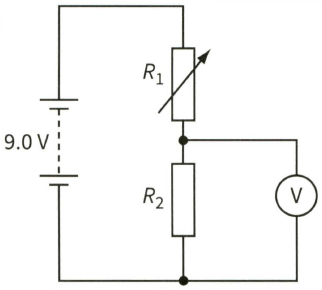
(a) State and explain how the reading on the voltmeter will change when the resistance of the variable resistor is increased.
This circuit shows a potential divider. The battery has negligible internal resistance and the voltmeter has infinite resistance.
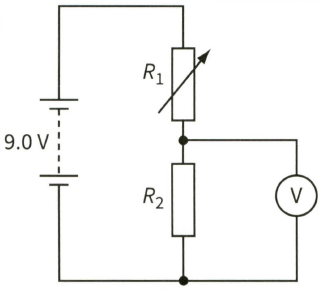
Resistor has a resistance of . Calculate the value of the variable resistor when the reading on the voltmeter is .
This circuit shows a potential divider. The battery has negligible internal resistance and the voltmeter has infinite resistance.
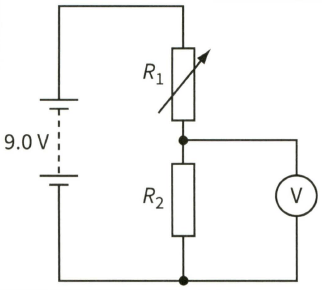
The voltmeter is now replaced with one of resistance . Calculate the reading on this voltmeter.
This is a potentiometer circuit.
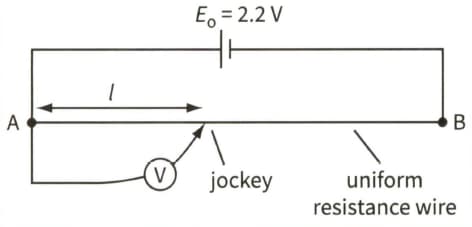
(a) (i) Sketch a graph of reading on the voltmeter against length, , as the jockey is moved from point A to point B.
This is a potentiometer circuit.
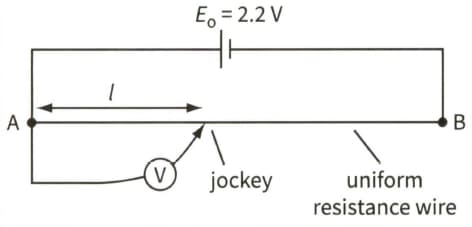
(a) (ii) State the readings on the voltmeter when the jockey is connected to A and when it is connected to B. (You may assume that the driver cell has negligible internal resistance.)
This is a potentiometer circuit.
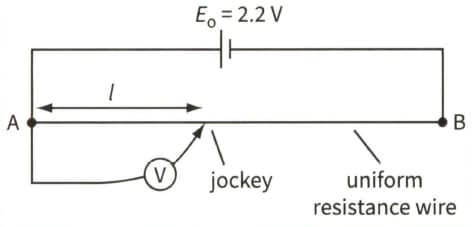
Draw a circuit diagram to show how the potentiometer could be used to compare the e.m.f.s of two batteries.
